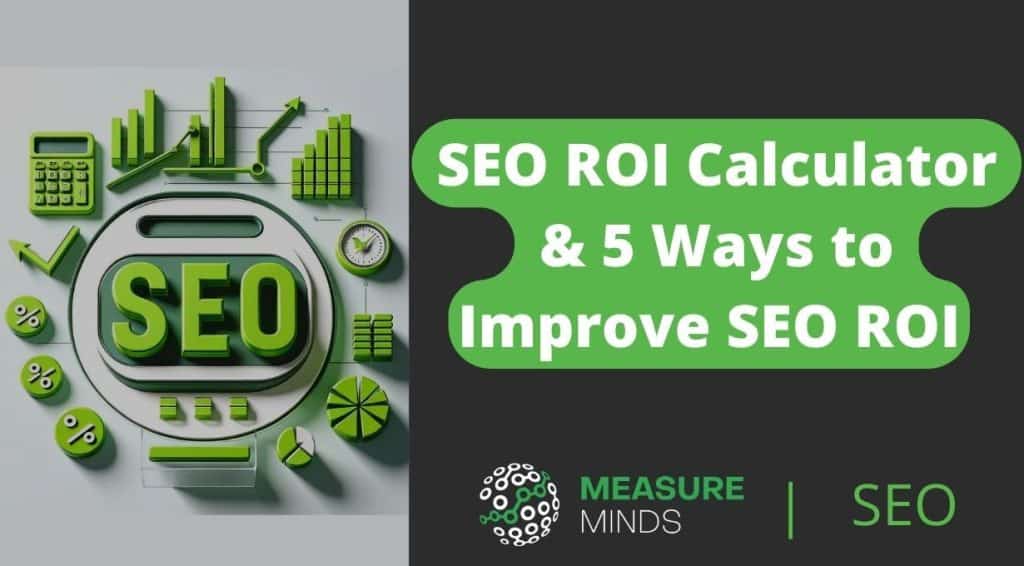
SEO ROI Calculator & 5 Ways to Improve SEO ROI
SEO ROI (return on investment) is really important to measure – just like any other marketing channel. You need to make sure that the benefit you are gaining outweighs the expenditure. So I wanted to show you a tool that helps measure SEO ROI for your target keywords.
What is SEO ROI
Search-engine-optimisation return on investment (SEO ROI) is calculated via the following formula: (Additional value of organic conversions – cost of SEO) / Cost of SEO X 100.

For example, if you had spent £10,000 on SEO and your sales increased by £30,000 then your SEO ROI would be: (30,000 – 10,000) / 10,000 X 100. Equalling 200%.
How to calculate SEO ROI
The difficulty of calculating SEO ROI is mostly down to the fact that calculating additional business revenue or value can be difficult. Especially as most marketing teams will use lots of different marketing strategies, not just SEO.
So the key here is discovering how to calculate additional business revenue. But if you need help to calculate the cost of SEO, skip ahead or use the contents section to the right-hand side.
How to use our SEO ROI calculator
We believe a great way of demonstrating SEO ROI is by demonstrating how much each position on the top 10 search results is worth for your target keyword. Because ultimately that’s where your SEO efforts will ideally land you.
Sign up here to get the free Google Sheets template that we work from to do this. Open it up and make a copy.
1. Enter keyword and sales metrics
To use the calculator you’ll need the following metrics/details. If you don’t have these available, I’ll show you how to calculate them later on in the article. Use the contents section to the right to skip to the relevant part. Or you can just use the default values for a rough guideline.
- Exact SearchQuery
- Search Impressions on Google per month
- Current SEO position
- Avg CPC (or enter CPM for Publishing)
- Land-to-Lead Conversion rate from Organic traffic (e.g. 10%)
- Lead-to-Sale conversion rate (e.g. 50%)
- Avg Sale value (e.g. £100)
- Approx margin (e.g. 50%)
- Avg number of sales per customer, per year (e.g. 12 per year)
- Avg Customer duration (e.g. 2.5 years)
- Website Type
- SEO investment
Assuming that you have all that data, you can input the values into the corresponding cells (yellow)
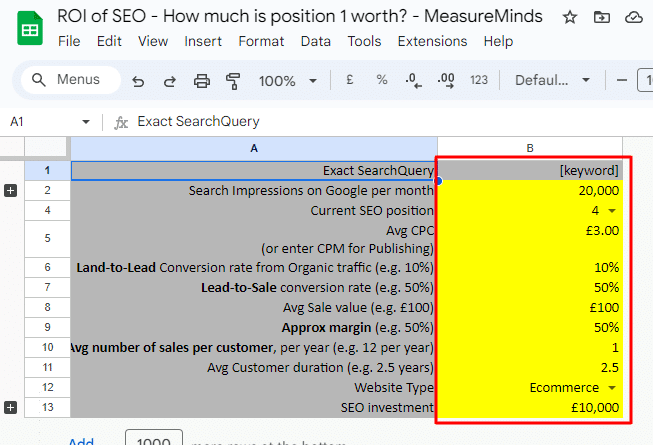
2. Analysing your SEO ROI
If you now move to the second tab (output) you should be able to see:
- Metrics on each position
- Reach (monthly searches for this keyword)
- Clicks
- Cost (CPC x clicks)
- Leads
- Revenue (clicks x revenue per visit)
- % revenue increase vs prev pos. (previous position)
- Profit
- SEO ROI
- A line graph displaying the estimated profit per position.
- Your current position.
Note: All of the figures given in the spreadsheet are per year.
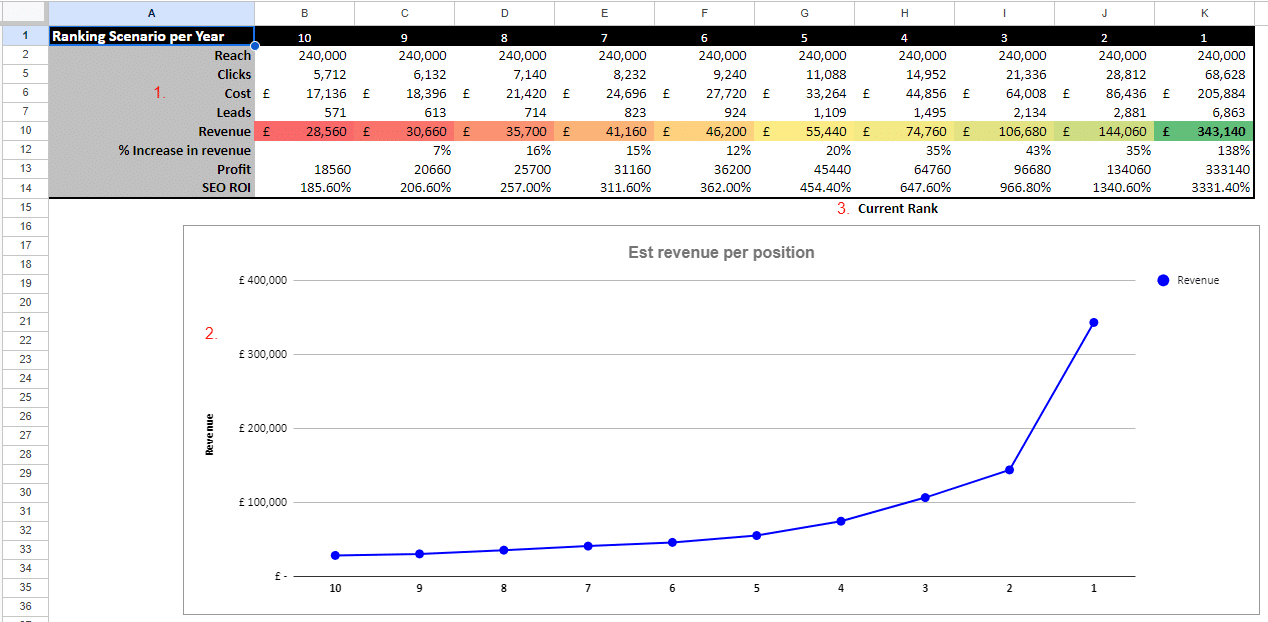
3. Calculating your SEO ROI
Assuming you know how much is being spent on SEO you can now calculate the SEO ROI for each position. Let’s say for the above figures, you pay £10,000 for SEO.
This is what the SEO ROI would look like for position 1.

SEO ROI = 3331.4% which is shown in the table.
The calculation for SEO ROI in row 14 on the sheet works on the basis that you are not currently ranking for the given keyword.
To calculate the SEO ROI from going from your current rank use the following formula.

For example, in the case above our current position/rank is 4 where you should be getting £74,760 revenue. So what’s the ROI on SEO for getting to position 2?
Here is all the data we need for the calculation:
- Target rank revenue = £144,060
- Current rank revenue = £74,760
- Cost of SEO = £10,000
So…

SEO ROI of moving to position 4 to position 2 = 593%
4. Calculating for multiple keywords
The above example shows the SEO ROI for one keyword. But you can start from step 1 for multiple keywords using different keyword data and find the sum of total target rank revenue and the sum of total current rank revenue and perform the same calculation.

How to find keyword and sales metrics for input
Earlier I mentioned all the metrics you’ll need about your target keyword and your sales information too. If you don’t have these to hand a few of them a filled in automatically based on industry averages. But you should tailor it to your business for better accuracy.
I will now show you how to find each of the metrics I mentioned.
How to find search impressions on Google per month
You can use any keyword research tool to find this information. My recommendations are Google Keyword Planner (free and most accurate) or Ahrefs, SEMrush or Keywords Everywhere (paid).
Using Keyword Planner, you will need to set up a Google Ads account and sign in via the keyword planner. Then select ‘get search volume and forecasts’.
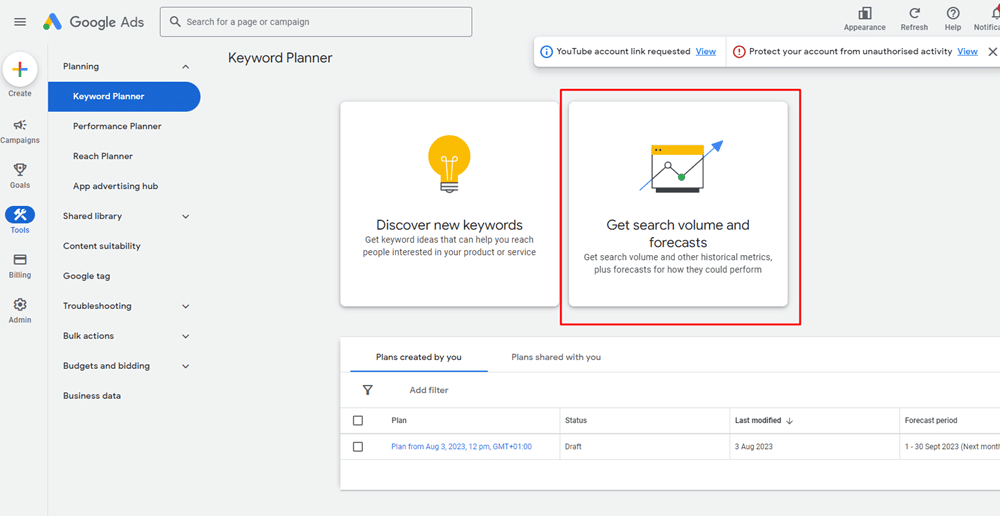
Enter your keyword(s) and click search. You will see metrics, including monthly search volume in the results:

How to find your current SEO position
If you are targeting a new keyword, just put your rank as 10.
If you’re targeting a keyword that you already rank for, set up Google Search Console if you haven’t already and then navigate to the performance report.
Click the ‘+ New’ button, select ‘Query’, click ‘Exact Query’ and paste in the keyword that you’re looking to track.
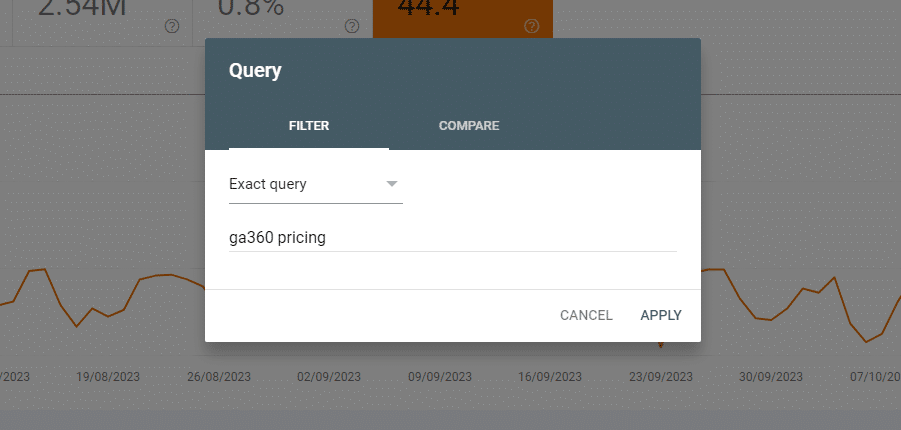
If you have multiple pages ranking for the same keyword you may need to hit pages and then select the page you want to track. I suggest setting the date range to 28 days or less to have relatively fresh data.
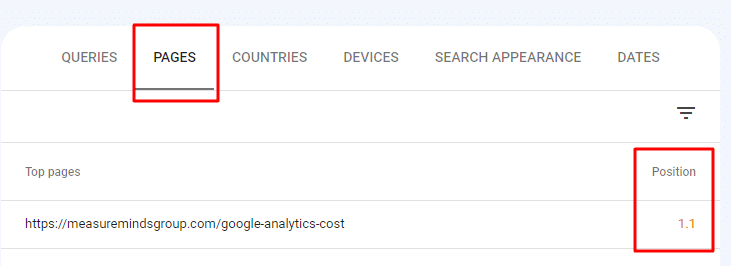
How to find average CPC
You can do this for free again with Keyword Planner or use any of the paid SEO tools I mentioned before. Using the keyword planner just take the median of the two CPC figures:

How to find land-to-lead conversion rate
If you’re targeting a new keyword, I’d suggest leaving this field at 10% or Googling what the average conversion rate is for your industry.
You can view the land-to-lead conversion rates of similar pages on your site and use that as evidence instead. To do this you’ll need to set up Google Analytics. You have to do this if you’re targeting a keyword you’re already ranking for anyway.
It’s also good to connect Google Search Console to Google Analytics but not essential for this task.
Once you’re in GA you can navigate to engagement>Landing page.
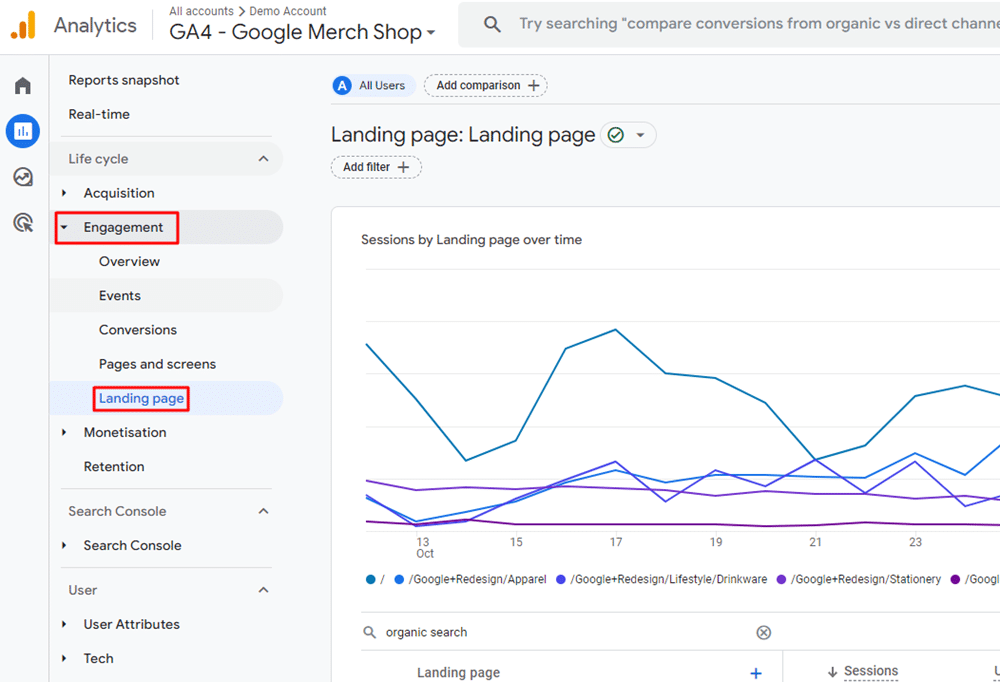
You will then need to add a dimension.
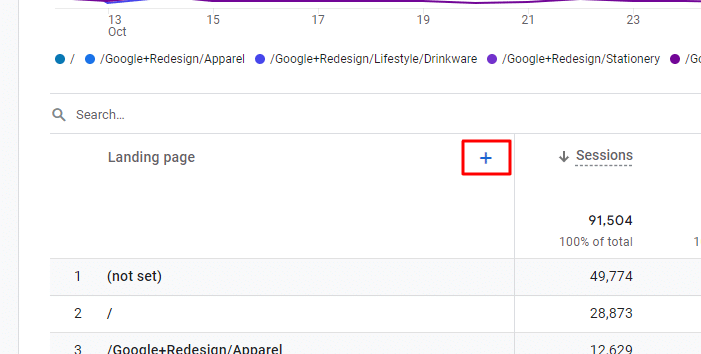
Type in and select ‘Session default channel group’.
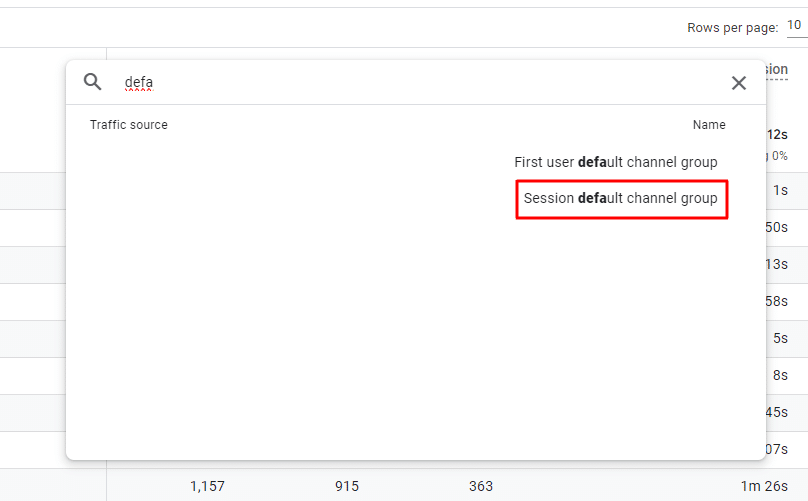
Finally, use the search function to show organic search only.
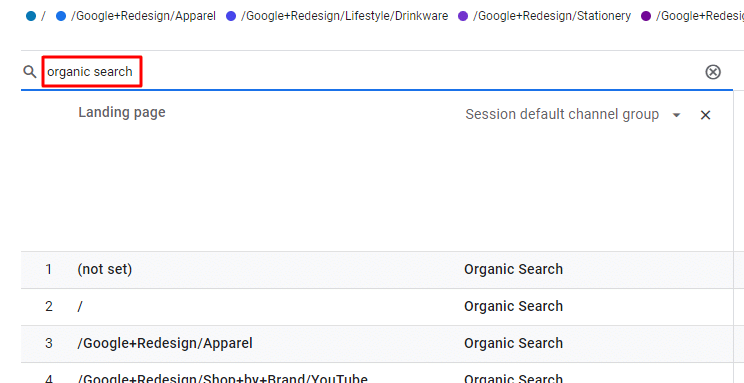
Find the number of conversions for the page you’re looking for and then divide that number by the number of sessions on that page.
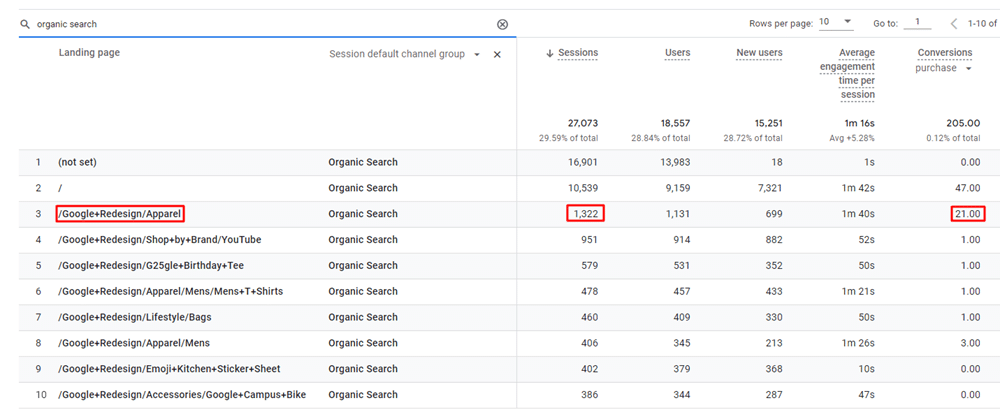
Note: you should check what conversions are being attributed for by clicking the arrow next to conversions.
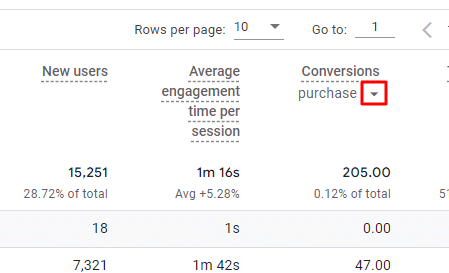
You can see from the image below that there are a number of different types of conversions set up. However, in this case, we are only interested in ‘purchase’ conversions, because that is what yields revenue.
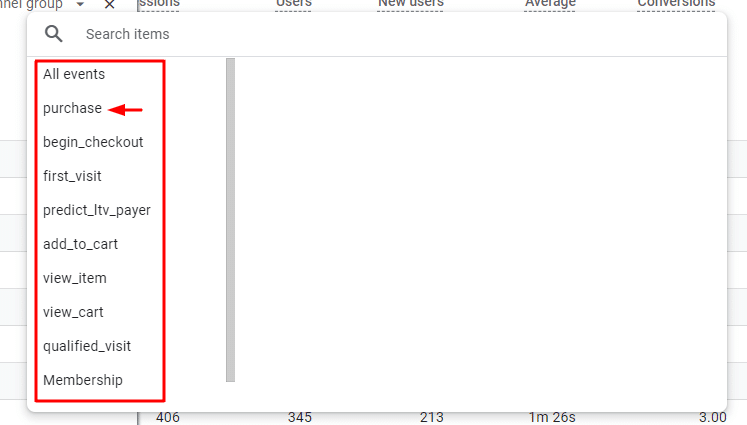
Assisted conversions
Make sure you’re tracking assisted conversions. Your articles/landing pages may not directly lead to a conversion, but that doesn’t mean that they didn’t play an important role in converting a user.
By attributing your conversions properly, you can see how moving up a few keyword rankings for a specific keyword can seriously impact your sales, profit and therefore SEO ROI.
Learn about and set up data attribution modelling in Google Analytics 4 to allocate more accurate conversion data to your landing pages.
Questions to ask your sales department
Some metrics will be unique to your business. We have provided default suggestions, but we highly recommend getting actual figures from people within your team who know these things:
- Lead-to-Sale conversion rate. Default = 50%.
- Avg Sale value. Default = £100.
- This may already be set up by analysts in your conversion tracking in Google Analytics. Navigate to Admin>conversions>purchase and then divide the event value by the number of conversions for organic search. Alternatively, you can use the same method we used to find land-to-lead conversion rate and divide total revenue by the number of conversion for that page.
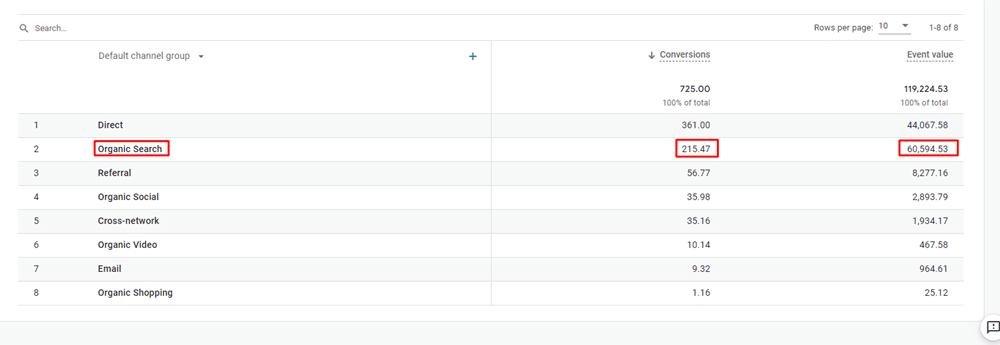
- Approx margin. Default = 50%.
- Avg number of sales per customer, per year. Default = 12 per year.
- Avg Customer duration. Default = 2.5 years.
How to find website type
This should be fairly obvious if you’re running a site. We have broken this category down in 4 options:
- Ecommerce.
- Lead gen.
- Publisher.
- Other.
How to calculate SEO investment
For some, this is straightforward. If you’re purchasing or selling SEO services, you can set the SEO investment value to whatever you have quoted.
However, for in-house teams let’s say there might be multiple factors contributing to SEO and it’s not as straightforward as getting an agency to do it. Here are the things you need to look out for:
External resources
External resources that your business uses for SEO are easy to calculate. This could be:
- Agencies
- Freelancers
- Consultants
These are billed regularly and you can see the payments on invoices.
SEO tools
Any SEO tools that you use should also be billed as part of your SEO investment if they are used on the project.
If you have four separate SEO projects on the go, divide the cost by four. That way you’ll have a more accurate calculation for the SEO investment of this project.
In-house employees
You should include in-house SEO employees in your SEO investment if they will be working on this project. Similarly to SEO tools, try to be accurate with how much to include. If your entire team will be working on this project, but they will be working on five other projects at the same time and for an equal amount of time, then divide the costs by six.
Content and link building (writers)
Content and link building are both critical elements of SEO. You may have writers working on producing articles and submissions for whitehat link building strategies such as HARO or Help a B2B Writer. You need to include this as part of your SEO investment.
As writers typically invoice with details of the different projects they are working on, this should be fairly easy to calculate.
How to improve SEO ROI
Now that you know how to measure SEO ROI. Let’s look at some ways you can improve it.
Repurposing and refreshing existing content
Creating content can cost a lot of resources in research, writing and editing. Whereas refreshing or repurposing your content builds upon existing resources. Additionally, by doing this you have a better chance of ranking for the initial keywords you targeted in your strategy which are likely to be the most important to you.
Refreshing content
Refreshing is where you take an existing piece of content and optimise it to match current searcher intent. By using keyword tracking tools you can identify drops in rankings which may indicate that your content isn’t relevant anymore.
You can then identify what is ranking for that keyword and see what that content is doing/providing that yours doesn’t. Then try to incorporate that in your own article. Don’t plagiarise, instead, you should improve on what your competitors have done. Try incorporating real-life use cases and statistics from your research – which is becoming more and more important for SEO in 2024.
I would recommend using a tool like Scalenut or Frase to help identify potential optimisations in your content once you have identified the URL and keyword(s) you want to optimise for.

Repurposing content
Repurposing content is slightly different. It’s the process of converting content from one format to another. This can work by cutting up a big piece of content into smaller articles that target different keywords. Or changing the format completely. Here are a few formats that work well:
- How to article – Video
- Article – Infographic
- Content hub – Downloadable eBook (lead-gen opportunity)
These conversions can work vice versa.
It’s good to do this because people consume content differently and it’s up to you as a marketer to ensure that your content is accessible as possible to your customers. The content is already there, and now there are plenty of AI tools that can assist you in converting it into a different format.
Conduct keyword research with care
This may sound very obvious. But I see a lot of people getting the basics wrong – and the basics are what everything else in your SEO strategy is built on!
Every business has a niche, but there are plenty of keywords in that niche that aren’t going to be as useful in converting your customers. Targeting the keywords that answer your customers questions and touch upon their painpoints, will provide a much better ROI.
An example of this that is always useful is what I call ‘cost of’ keywords. If I provide SEO services (which I do!), then I’ll write an article on the cost of SEO services because my potential customers who are looking to buy SEO services are likely researching how much they will cost.
I may even write about an SEO ROI calculator because potential customers are smart enough to want to calculate… Wait a minute…
Joking aside, you can see how this works. And I love these types of keywords because they can be applied to almost any niche.
Become a topical expert
On the topic of targeting keywords that will likely convert, it’s important to build your authority on a specific area. The more you write about a certain topic, the more Google and other search engines associate you with that topic.
So instead of just talking about SEO in general, I talk about enterprise SEO a lot of the time because I offer enterprise SEO services. SEO is a very expansive topic, it’s worth targeting keywords where your expertise lies first because this is where your ideal customer persona searches. Then expand your portfolio to cover broader matches.
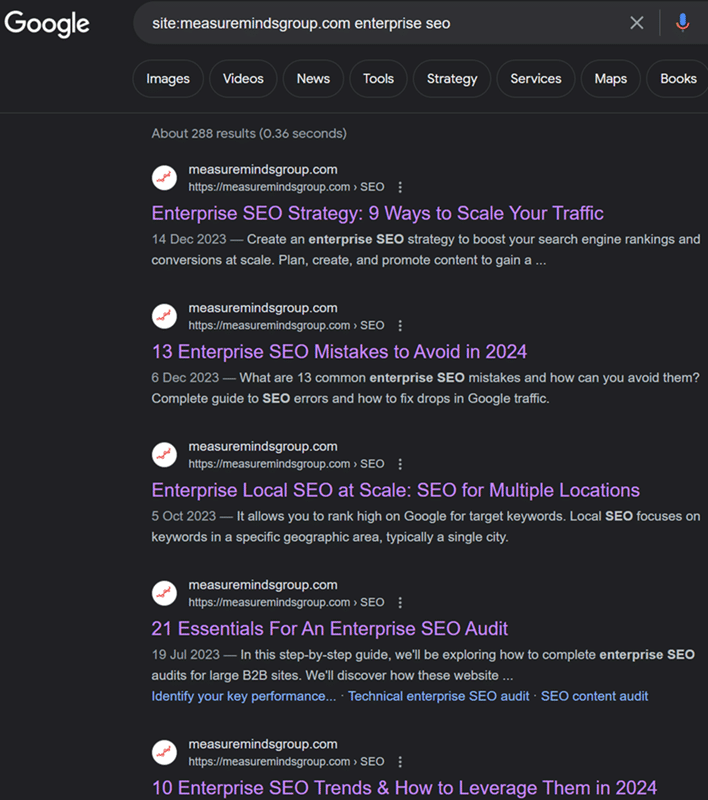
This goes for link building too. Instead of trying to build many links, research and try only to build quality ones from domains within your niche. Quality over quantity.
Using customer feedback and questions
You may have something set up on your website or within your sales team that keeps track of customer feedback and questions that they ask. If you don’t, set this up. You can use feedback and questions to inform what content to write or at least incorporate in a larger article.
Shop around for better resources
This speaks for itself but can be a suitable reminder. Ahrefs switched to a credit system that costs an absolute fortune to use. Although it’s a fantastic tool, you may want to consider alternatives to reduce your costs.
New SEO tools are coming to market all the time and some of them are impressive and innovative. Give them a try.
Avoid spending money on links. I’ve never bought a link in my career. And I don’t think I ever will. Earning them through forming good professional relationships and producing high-quality, helpful content is not only more in line with Google’s guidelines, but it’s much more rewarding!
There are lots of great writers and editors out there. Don’t get rid of any of your existing team, but look to expand it with a diverse skillset. The investment now will pay off in the long run.
Optimising for pagespeed & technical SEO
Again, this might sound obvious – but getting your on-site SEO nailed first allows you to get the most out of your off-page SEO. On-site SEO is something you have FULL control over. That’s not always the case with off-page.
My quick tips for on-site SEO
- Run an SEO audit at least once every year. Two or three times is best.
- Run a ScreamingFrog crawl. (widely regarded as the best SEO crawler).
- Optimise titles and descriptions. I cannot believe how many sites do this poorly. One of the top ranking factors.
- Convert images to WEBP. Easily done via a plugin or via a CDN like Cloudflare.
- Implement more internal links with varied anchor texts.
The SEO audit I linked above covers a lot more. I recommend reading it.
I’ve talked about user-generated content (UGC) at lengths online and stand by its effectiveness to:
- Create great quality articles that rank for very few resources.
- Generate social impressions and engagement.
- Create professional relationships with people within your niche.
The quality comes from bringing together expert opinions on a topic. People share real-life use cases and applications which is something AI can’t do. Therefore, the content will still likely rank when Search Generative Experience kicks in.
You can quickly get lots of experts to contribute by using UGC platforms such as HARO or Help a B2B Writer. Write up your question, for example… What are the top GTM tools out there?
Or you can manually outreach to your favourite experts in a particular field like I did on this occasion. It takes a bit longer and is more hands-on though.
After the articles is written, containing all the contributions, you can publish and then share on social media. I make sure to tag all the people who contribute to the article, the companies they work for and the companies/tools they recommend. Note: The below example is from a post about the top SEO tools.
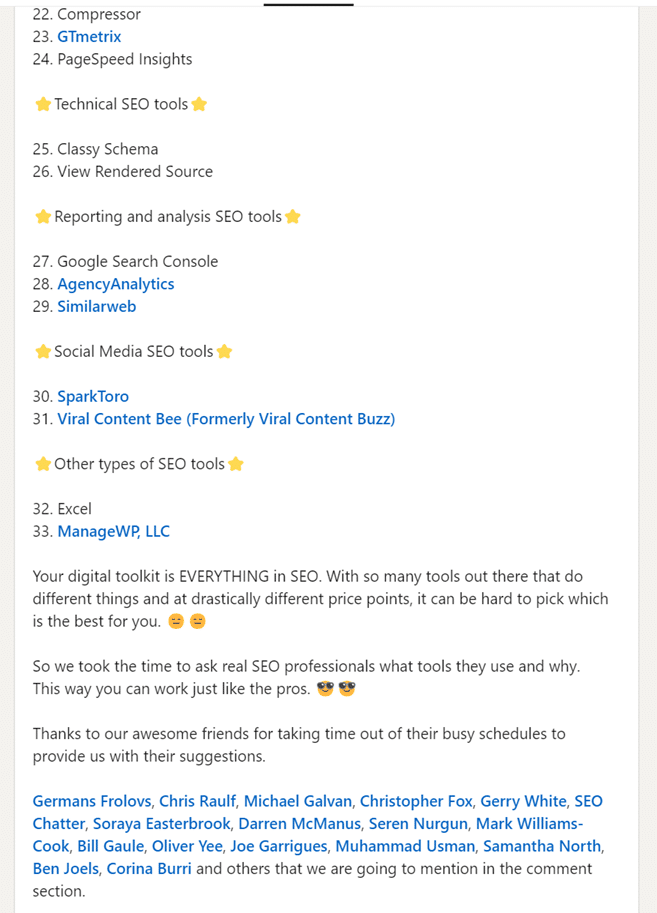
Because everyone loves to be involved and seen as an expert, they tend to engage pretty well (back to the GTM tools example):
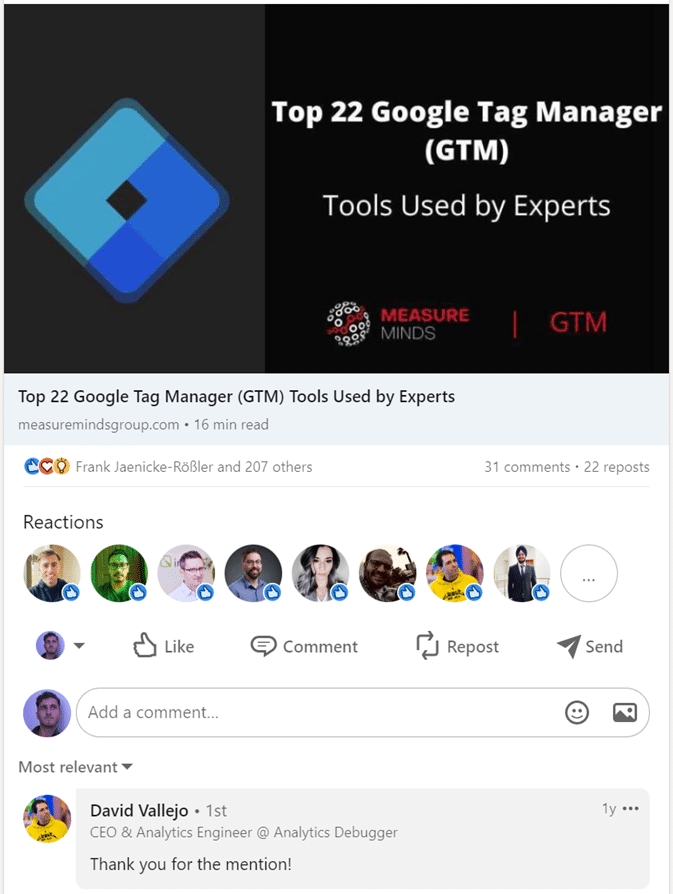
After all this exposure and having been featured in an article with a backlink pointing to them, the contributing experts are usually very happy with you. Giving you a platform to build a good relationship and collaborate further.
This is my top low-cost content creation tip and something I believe firmly that businesses should us more.
I hope you found this article useful. Do you have any cool methods of increasing SEO ROI? Email me at william@measuremindsgroup.com and I’ll feature you in this article if I feel it’s appropriate.
- How to Blend GA4 & UA Data Using BigQuery & Looker Studio - 12/07/2024
- How to do a Google Analytics 4 Audit & Mistakes to Avoid - 10/07/2024
- How to Backup & Visualize GA3 Data for Free - 27/06/2024